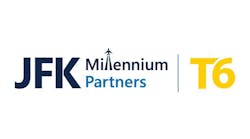Increasing Passenger Confidence in Air Travel with International Aviation Hygiene Standards
As we edge into winter, many regions remain in some form of lockdown due to COVID-19, while in other areas many individuals are choosing to resume a level of normal, pre-pandemic activities. While likely different than before, hallmarks of regular life such as dining at restaurants and shopping in stores can be seen. However, one area that has yet to be reengaged in the same way is traveling, specifically air travel. With most statistics showing that air travel levels are at least 50% less, if not more, compared to 2019, airlines and airports are starting to take drastic action such as airlines resorting to using their frequent flier programs as collateral for loans and continuing to furlough employees.
It’s clear that consumer confidence in the industry must be restored in order for the American pastime of air travel to resume and international standards can provide a clear way forward.
Recent Gallup research shows that 69% of American air travelers aged 55 and older, and 33% of those aged 18 to 34, say they would not be comfortable flying. Although, a recent study by the Defense Department found that the risk of exposure to COVID-19 is virtually non-existent on flights. And, similarly, a Harvard report found that air travel during the pandemic is as safe, if not safer, than other activities such as grocery shopping because of the ventilation systems on aircraft that recirculate air every 2-3 minutes; this combined with wearing a mask, and increased cleaning procedures, make it unlikely for the coronavirus to be transmitted on a flight according to the study. But perception is much stronger than reality.
According to MarketWatch, in a survey commissioned by an airline trade group, the biggest concern of travelers was the possibility of sitting next to an infected person. Even though many airlines and airports are already working hard to win back customers, there are additional steps that can be taken to highlight a commitment to safety.
To rebuild and thrive in the future, airports and aircraft need to be safe, clean and hygienic; people need to be assured that they are safe places to be. This means adhering to the new normal ways of working, in all aspects, including increasing the use of PPE and standardizing its requirement across the board, as well as increasing standards for cleaning and hygiene at facilities and on aircraft. While there are many ways to do this, adherence to internationally-recognized standards is tried and true method.
For example, when it comes to PPE, we know that consumers are actively looking for signs that the use of PPE is taken seriously. In a recent survey from PwC, nearly 75% of respondents said employees wearing personal protective equipment (PPE) makes them feel safe and, in the same survey, nearly 85% said their travel decisions are dependent on the communications they receive from hotels and airlines about safety.
Beyond the use of PPE, airlines should adhere to guidelines established by the Federal Aviation Administration (FAA), the International Civil Aviation Organization’s (ICAO) Council’s Aviation Recovery Task Force, the European Union Aviation Safety Agency’s (EASA) ECD COVID-19 Aviation Health Safety Protocol or the local civil aviation authority guidelines. To increase the confidence of the flying public, a number of airlines are looking to have independent verification that these guidelines have been implemented and are being followed to provide additional an added layer of consumer confidence.
For example, BSI recently introduced an Aviation Certification of Compliance audit scheme, with Hamad International Airport in Qatar being the first to be certified as having implemented, and continuing to adhere to, ICAO’s COVID-19 safety protocols. For reference, the Hamad airport serviced around 39 million passengers in 2019 and is roughly the size of Minneapolis/St. Paul International airport in the United States – it’s a major travel hub in the middle east and their management is committed to reassuring travelers that they are taking every precaution to keep them safe.
That’s the key benefit of third-party verifications and certifications; to assure the public that the airport and their chosen airline have implemented all safety and hygiene requirements, as well as having implemented recognized best practices. In addition, as part of the process, expert auditors regularly visit allowing the facility and airline to continually improve the implementation and therefore the level of protection.
Ultimately, we are all interested in, and responsible for, protecting ourselves, our families, and, indeed, the wider population by taking actions related to social distancing, hand washing and wearing masks. But when we travel, we need the airports and airlines to take and act upon their greater responsibilities; to protect both the travelling public and their own staff.
Communicating to customers that aircraft and airports are safe and sanitary is paramount to reestablishing trust in aerospace and travel industries. Therefore, additional measures to improve cleaning and hygiene is crucial and to do so, third party verification, and ultimately certification, is key.
For example, if an airport has been independently audited and verified as meeting certain international standards, the travelling public can be confident that the airport is not only following a set safety standard but that those standards are being met. Additionally, for airlines, the travelling public will have confidence that the aircraft they’re flying in, is safer. For airlines this includes an increased focus on cleaning regimes, including taking into consideration the differences between short-haul and long-haul flights and increasing the frequency of cleanings.
According to a recent survey, U.S. consumers care most about how companies are taking care of the safety of their employees, so performing a thorough cleaning of the cockpit after each flight, as well as performing crew temperature and health screening checks before each flight would improve crew morale and highlight an airline’s commitment to employee safety and wellbeing. Also implementing the ICAO guidelines for COVID, which cover all aspects of airport and airline operations and the implementation of protocols to protect both the travelling public and employees.
In the age of COVID, a lot has changed, and adaptation is essential. For instance, remote auditing is providing the availability to conduct audits such as the one at Hamad International safely, from a distance, with access to auditors with the correct credentials as well as additional experts, if needed. An added advantage of remote audits is that they allow for the auditors to engage with multiple process owners at several sites at once providing the auditors more well-rounded insight into the effective deployment of the process which, in turn, improves cooperation and discussion within the organization as their regional managers engage during the audit.
Although challenges will remain, stressing the many ways that airports and airlines are improving safety is vital to restoring confidence in the airline industry. Adhering to time tested international standards of health and safety, as well as quality, are great steps in that direction.
Brendon Hill has worked in aerospace and engineering for over 40 years, including 26 years as a British Army Officer & Aircraft Engineer. He has worked in business assurance and certification for 17 years, including writing and implementing the QMS for the technical support of British Army aviation and then expanding this to the technical support for all elements of the army, including electronics, maritime, vehicles and weapons. He has worked at a senior level in industry supplying aerospace, defense and other critical and high-risk sectors such as oil and gas.


